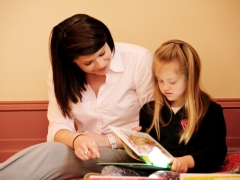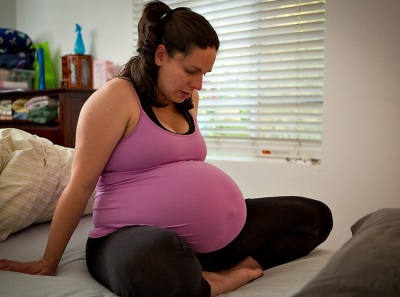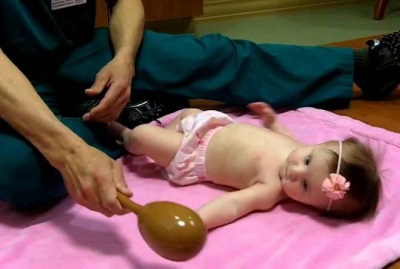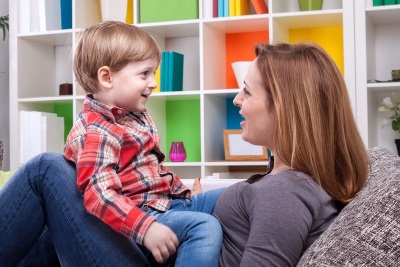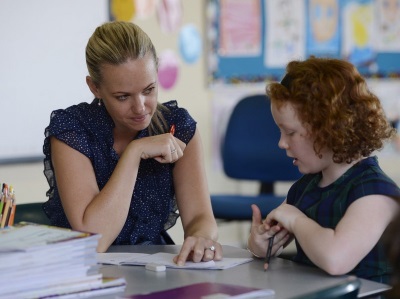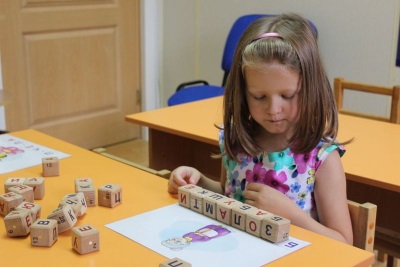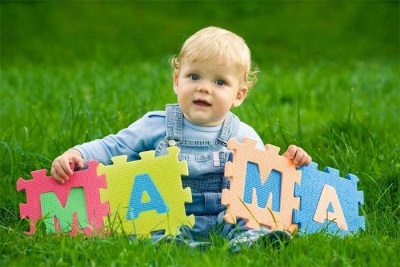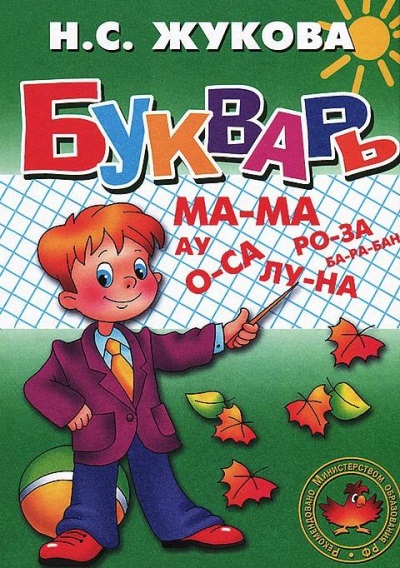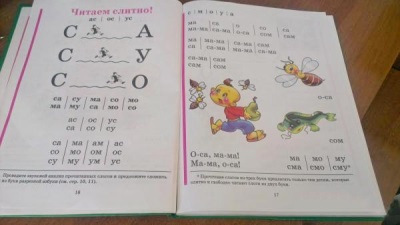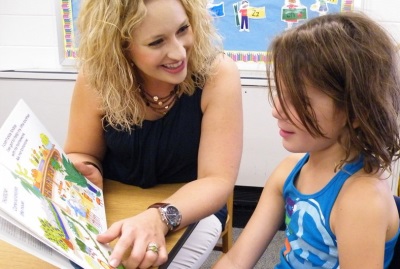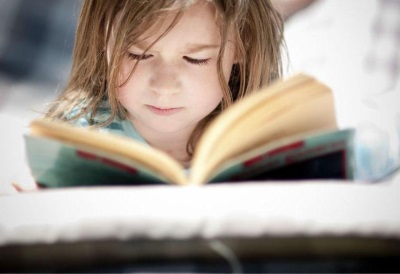How to teach a child to read syllables at home?
In the modern world, parents have to face the need to teach a child to read at home. Not always in kindergarten, children can learn this. Collective classes are not always fully absorbed by the child. Additional classes with teachers are quite expensive, not everyone can afford them. Therefore, parents try to do it at home.
Consequences of early reading and stages of development
Now many are eager to start developing and educating their children as early as possible. However, this approach may be not only useless, but also harmful to the health of the child. The results of the early start of training may not be immediately apparent. They may appear after several years and come to light in a completely unexpected form: stuttering, tics, obsessive movements, neurosis.
In order to understand why there are such consequences, it is necessary to know about the main stages of the development and formation of the child.
- From the very beginning of pregnancy and until reaching a baby of 3 years, the basis for its future physical and mental health is formed. At this time, the emotional sphere is actively being formed, and the child’s body and its cognitive interests are developing at an accelerated pace.
- In the period from the age of three to 5-8 years, there is an active development of the sense organs: hearing, sight, smell, touch, taste buds. The ciliary muscle of the eye, which is responsible for visual acuity, strengthens up to 5-6 years. That is why ophthalmologists do not recommend giving large loads on the eyes during this period, it is dangerous the development of myopia.
- At the age of 7 to 15, the conscious psyche of the child is actively developing.
In order to avoid the negative results of early learning, it is necessary to consider all these factors.
At what age is it worth teaching a child to read, see the next video.
Preliminary preparation
It is necessary to start preparing the child for reading long before the learning process. It is necessary to actively develop the child's phonemic hearing and sense of rhythm. These are important components for successful learning to read.
Sense of rhythm
You can begin to develop a sense of rhythm during pregnancy. Sing lullabies, which are still in the womb, this future mother will contribute to the development of his sense of rhythm. The baby will remember their rhythmic pattern and, having been born, will calm down much faster to the sounds that have already been heard. You can not only humor lullabies, but also to recite poems, to stroke the belly, observing the rhythm of performance.
At infancy and at an early age, a child can read poteshki, jokes. During the reading, pat it, stroke it, clap it with small palms, throw it on your lap, stamp it with your feet at the given pace. Such simple games with a baby will greatly contribute to the development of his sense of rhythm. You can also use small songs, popevki, combine them with a massage. Starting from 4 months, you can combine songs with rhythmic movements. As an example, you can use the song “We rocked on a swing. Kach, kach, kach, kach! ”Combine singing a song and rocking a child at a given pace. Teach your baby to dance, move to tunes unlike each other - waltz, polka, march.
Use the "sounding gestures" of the body: clapping, ringing and quiet slapping on the body, stomping, clicking with your fingers not only in the air, but also through the body. Teach your child to knock on various objects: spoons, cubes, toys. When he can walk on his own, he can begin rhythmic gymnastics.
Develop a sense of rhythm with speech. Clap and trap words, poems, songs, rhemes in the rhythm of reading. Long syllables are rare claps, short syllables are frequent. Use smooth hand movement. Learn to reproduce the rhythmic pattern that you have depicted. Use the simplest musical instruments: rattles, maracas, bells, drum, spoons, metallophone, metal triangle.
All these simple games will not only be interesting and fun for the child, but also perfectly help in developing a sense of rhythm.
Phonemic hearing
With the help of phonemic hearing, or speech, we distinguish and recognize sounds, we perceive their alternation in a word, we understand the meaning of what was said, we distinguish words that are similar in sound composition. If he is not sufficiently developed, then the child will have problems in the pronunciation of sounds, in speech development, in the ability to build coherent stories, the skills of literate writing and reading will not be developed.
It is possible to begin to develop speech hearing in the baby from the moment of its birth. Talk to him, pronounce the sounds that he utters and which he still cannot pronounce. Sing songs for children and lullabies to him, read poems, rhymes.

A period of great importance in the development of speech hearing is a period from six months to two years. But its final formation ends by the age of 7, when the child’s speech becomes similar to that of an adult.
Useful lessons in the period from 6 months to 2 years:
- When the baby becomes older, you can offer him to "listen to the silence" by closing his eyes. Let him then tell you about the sounds that he heard (ticking, dripping water, the noise from the neighbors), and then compare them with those sounds that you heard.
- Have a child find the sound. To do this, hide any sound-making thing and let it find it. You can play in the "blind man's buff", blindfolded and ring the bell.
- Show how different objects sound (knocking the spoon, hitting the ball on the floor, rustling of polyethylene, rustling of paper sheets, creaking of the door, falling on the floor of something). After that, tie the child's eyes and ask to guess which object makes a sound. Play with musical instruments.
- Make toys with a child noisemaker. To do this, fill small jars with various loose items (sand, stones, semolina, millet, beans, small metal objects). Make a pair of each species. Then ask your baby to close his eyes and make some noise. Let the child find a pair, a jar with the same filling.
Games for developing a sense of rhythm can help in the development of phonemic hearing:
- Play the game "Loud-quiet." On loud words or the sound of some objects, agree to perform one action, on a quiet sound - other actions.
- Find the right one. For the game, select words with similar sounds (dot-night) and corresponding pictures to them. Call the object, and your crumb should as soon as possible find it in the picture.
- Ask the child to clap or stomp only when you call the item correctly. Make a mistake in the pronunciation, replace the first letter: grilavok, drilavok, trilavok, counter, shrylovok ...
- Let the kid find mistakes: We lit a sheep (candle). In the river floated house (catfish).
- Agree on the pronunciation of only the same syllables, and if you make a mistake, the child says “stop”, claps or stomps. RA-RA-RA-RA-RA-BA-RA-RA.
- Use sound imitation to develop phonemic hearing. Ask to say how the cat says, the dog, how the fly flies, the mosquito ...
- "Whose house." To play draw houses with different number of windows (2, 3, 4, 5, 6, 7). Match words with the appropriate number of sounds (mind, mouth, tiger, mouse, forty, gift). Explain that each word has its own house and in order to find it, it is necessary to count the number of windows in the house and the number of sounds in the word. For one sound - one window.
- "Runaway Letter". Ask your child to guess which letter has escaped: _orona, _agon, _orobey, _jennye, _arezhka. (The letter B has run away).
Develop phonemic hearing with the help of educational games. Many of these games can be played not only at home, but also in a long line, for a walk, during a trip.
Well, if you teach a child early to divide words into syllables. How to do this, says the teacher Svetlana Orochko in the next video.
How to understand if a child is ready to learn to read?
You can understand whether your baby is ready to learn to read, if you analyze a number of factors:
- the child builds coherent stories, is not confused, making up sentences, speech is meaningful and intelligible;
- he utters all sounds, has no speech therapy problems;
- he is all right with hearing;
- development of phonemic hearing at the proper level;
- has landmarks in space, can show where left-right, top-bottom.
- interested in literature and, perhaps, even asks you to teach him to read.
If all these factors are present, then you can start learning to read.
The choice of teaching methods
If earlier everyone used only the traditional method, now there are a lot of them. By choosing a suitable program you need to come responsibly, because each of them has not only advantages, but also its disadvantages. Training by method Tyuleneva, Zaitsev's cubes, teaching methods of Glen Doman and his cards are all these modern techniques that do not have long-term studies.
You can often face the fact that the child can read as early as 3-4 years. However, it may not like speech therapists, teachers and neurology specialists. Children whose choice of parents fell to memorizing syllables may experience problems with sound-letter analysis of words. Pupils studying in an unconventional way may have difficulty dividing words into syllables, “swallowing” the endings of words. Retraining of such children is given to teachers much harder than learning from scratch.
Neuroscience may experience problems with hyperactivity, increased excitability. Socialization of a child can be very difficult. Reading can be mechanical. Child quickly makes words from syllables, can perfectly read sentences, but at the same time does not understand at all what he read.
For more information about choosing a technique, see the following video.
Learn letters
It is worth starting to study letters with the vowels “a”, “o”, “u”, “e”, “s”, “i”. Tell your child why these letters are called vowels. They can be sung in a voice, the consonants of singing will not work.
After studying the vowels, we begin to learn voiced consonants - “m”, “l”, “n”. It is necessary that the child fix his attention on the letter, its graphic writing, and not the picture associated with it (A. Aist, B - the hippopotamus).
After careful study of the vowels and voiced consonants by the kid, you can begin to learn deaf consonants ("t", "p", and others) and sizzling "g", "sh", "ch", "u".
Remember, when learning letters, never use their name. The child must memorize the letters with the help of sounds. There are no “ER”, “DE” “EM”, etc., only “R”, “D”, “M”. It’s still hard for a child to understand that if a letter is called “EM”, then why isn’t it read in the word MAMA? He will read Emaema.
Use educational games to memorize letters, sculpt them from salt dough and clay, paint them, construct them from wire, counting sticks, matches, draw letters on the palm of a child, use a magnetic alphabet. Watch video tutorials, look for the studied letters everywhere: in books, newspapers, on shop signs, billboards.
Each time fasten previously studied material. When studying a letter, be sure to remember those that the crumb already knows.
Show calm and patience. Even for adults, nothing is given right away. Understand that the world of letters for a baby is very complex. If today he cannot remember the letter that he studied yesterday, it means that he should not be scolded for it, but should be repeated again, and be sure to remember it the next day. Repeat the material covered until the child is well oriented.
Learning to read syllables correctly
Start learning to add letters should be almost immediately. After you learn the vowels and a couple of consonants, you can already merge syllables.
It is very accessible for children, how syllables of letters are formed, described in "Bukvare" N. Zhukova.
Cheerful boy runs from letter to letter. The first sound stretches until it reaches the second. Instead of a funny boy, you can use any of your favorite baby toys. This may be a ship sailing from one port to port; a bear cub traveling from one letter to another; a machine that moves from one parking lot to another ... There are many options, the kid himself can tell the plot.
Start learning to read by syllables with a combination of two vowels: AAAUUU, OOOUUU. When the child understands how to combine sounds, go to syllables with the combination consonant + vowel (BA, YES, BUT). Learn the letter and add syllables with it. It will be harder for a child to add syllables with hissing consonants (HA, HA, NA). This will be the next stage of training.
After the child learns how to add open syllables (consonant + vowel), go to closed (vowel + consonant). You can please the baby that he learned to read the words (AH, OH, YES, SL).
At the initial stage of learning to read the syllables, ask the child to sing them, so he will not pronounce individual sounds. Singing will help you learn how to read syllables together. Always repeat what you have learned before. You can take advantage of ready-made video tutorials or presentations. This will bring a touch of diversity to your classes.
See the next video for an example of how letters should be put together in syllables.
How to teach to read by syllables?
After the child has memorized all the letters and learned to read syllables, it is time to learn to read by syllables.
At first, suggest simple words to read: MOM, RAMA, SOAP, BABA, MILA. Follow the pronunciation of the child. Teach him to read words from 3 letters.: CHEESE, CAT, HOUSE, MOUTH. Later, go on to read words with 3 syllables or more: CROW, FORTY, MILK. Choose to read words that denote specific objects or actions.
After the baby gets to read individual words, start reading simple sentences. RO-MA MYL RA-MOU. MA MA MA WE LA MI LU. I and RO-MA - MO-LOD-CHI. Pay attention to the fact that the child pauses between words, sentences, keeps the rhythm and intonation color. During this period, you can explain to the child what punctuation marks are and what they are for. It is necessary to tell about the interrogative and exclamation marks, how the period differs from the comma, that the sentence contains a complete thought.
How to teach a child to read fluently?
Post reading is characterized by the fact that children spend a lot of time and effort on it. The child first reads the word by syllable, then combines the syllables into a word. If he reads a sentence, then these processes occur with every word from him. Only then he combines words into sentences and can understand its meaning. As a result, when reading a small text, the young reader can not always reveal its meaning. Holistic perception of the text is missing.
The next step in learning will be to read familiar simple words holistically, but the more complex words the child will still read by syllables. At this time, he can make a lot of mistakes when reading, because he starts guessing words, replacing endings in them. It is very important not to miss this moment. If you pay attention to a large number of errors when reading, you need to reduce the pace. This is done so that a frequent return to what has already been read to correct errors does not lead to a regression of eye movement.
Only after passing through this stage, the child learns to read holistically, fluently. At the same time, the reading rate increases, errors become rare.
In order for a child to learn to read fluently, you need to pay attention to:
- development of memory (information is stored in the memory of the time that is needed to perform any task, to achieve the goal);
- widening the angle of view;
- development of attention;
- the inadmissibility of regressing eye movements;
- vocabulary expansion;
- good development of articulation.
Very helpful to you in the formation of the skill of fluent reading, multiple training sessions in reading. Do not force the child to read for a long time, let him read for 5 minutes and rest. Such reader five minutes during the day can be arranged several times. Visual dictation will be invaluable. They are very good at helping develop memory. In the formation of the skill of reading fluent reading reading patters, expressive reading.
For the development of memory, the child can be invited to play the following games:
- Consider the picture with the objects depicted on it for 30 seconds - 1 min. Close it and ask the baby to name items or write them down. By the same principle, you can place several items on the table (about 10) and let them be examined. After that, ask the crumb to turn away and remove 2 items or swap them between themselves. Ask the child to name the items that were removed or to tell what has changed.
- The game "Find the same cards" can help. All cards are turned upside down. The child alternately opens a pair of cards and searches for the same ones. Wins the one who collected more pairs turned out.
- Within a few seconds, suggest to consider the picture, and then removing it, ask the child to tell as much as possible about what was depicted.
To expand the angle of view in a child, the use of Schulte's tables will be very effective.

The following games will help you in developing attention:
- "Find a picture." Before playing a few bright, colorful pictures. It is necessary to show as soon as possible to the picture that the presenter calls. The game will be more interesting, if there are 2 or 3 players. Whoever has shown the desired picture faster, he takes it for himself.
- "Cross out the letter." The child is offered a sheet with letters written on it. Within a few seconds, he should cross out on the sheet all the letters that the adult said (For example, APIGPYYOPARTA ABDRLTSA - Cross out the letter A). The time that is given for strikethrough is determined based on the number of letters on a piece.
- “Slam When You Hear” Various words are spoken at a fast pace. He needs to clap his hands when he hears a word on a given topic. Topics can be offered each time different: vegetables, fruits, wild animals, pets, dishes ...
Reading with a closed part of the read text helps to avoid regressing eye movements. Each read word is immediately closed by a ruler, bookmark or sheet of paper.
Here there are only a small number of games that will help your child learn to read fluently. Rely on them and invent your own, adapting to the desires of the child.
Important information for the development of speed reading by a child, see the following transfer.
Important tips for parents
- Start learning to read only when the child is ready for this psychologically. For all children, this can occur at different ages. Some will be ready to study for 4 years, and some only for 6-7 years.
- Train only in a playful way. Perceiving and assimilating information for another preschooler is still very difficult. The effect of boring classes will not be.
- Do not force. This way you can discourage reading.
- Set an example. Children always imitate their parents.
- Talk to your child about the importance of reading.
- Responsibly approach the choice of teaching methods.
- Engage every day. Regularity of classes is very important.
- Do not overstate the requirements for the child. Act only on its capabilities.
- Do not compare the child with anyone.
- Dose the proposed information.
- Consolidation of the study is very important in teaching reading.
- Use different ways of presenting information.
- Show patience, kindness and love for the child.
- Encourage your baby for success.
- Follow from easy to hard.
- Teach the child wherever circumstances permit.
- Read the child yourself. It is still very difficult for him to read on his own, and the love of reading must be maintained.
Watch a video of GuberniaTV, in which Elena Kondrashina talks about how to teach a child to read.
Video tutorials can also be of great help in learning to read.
